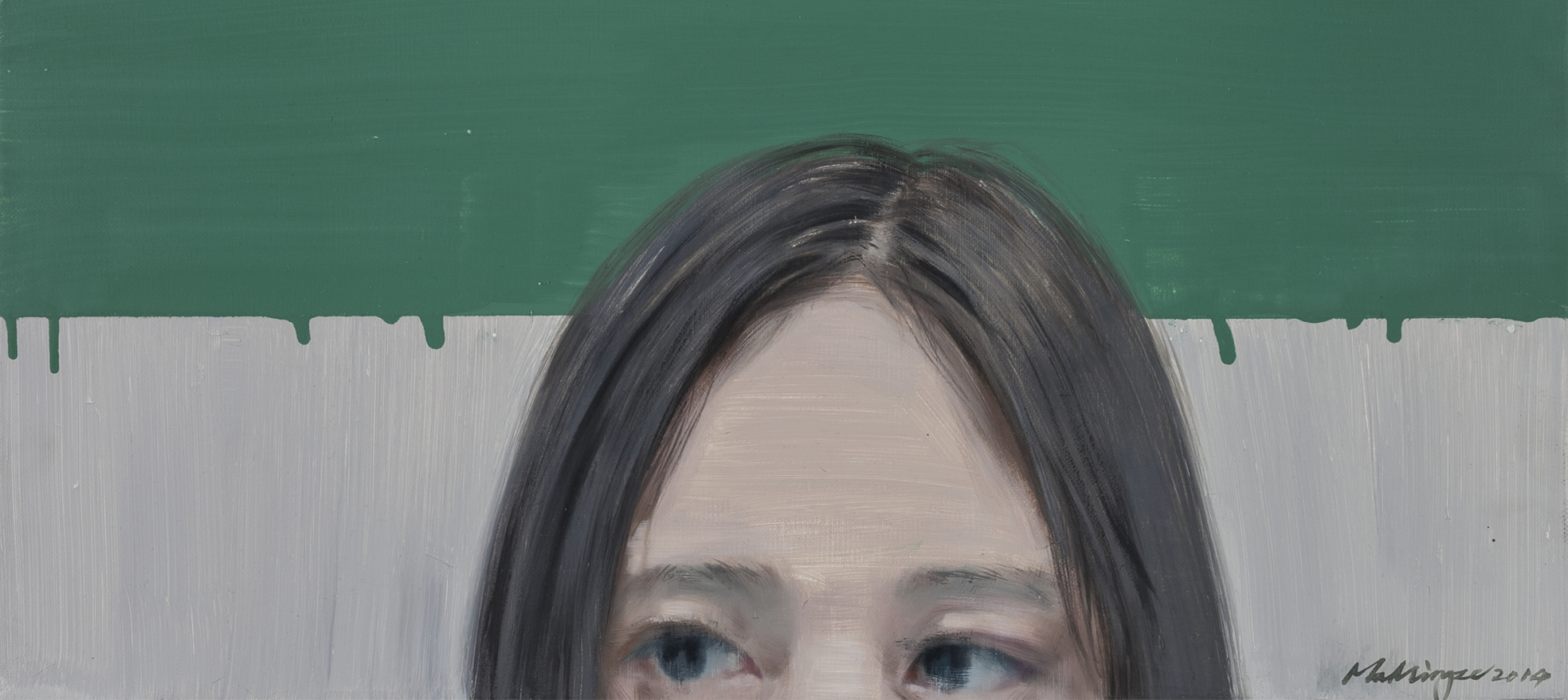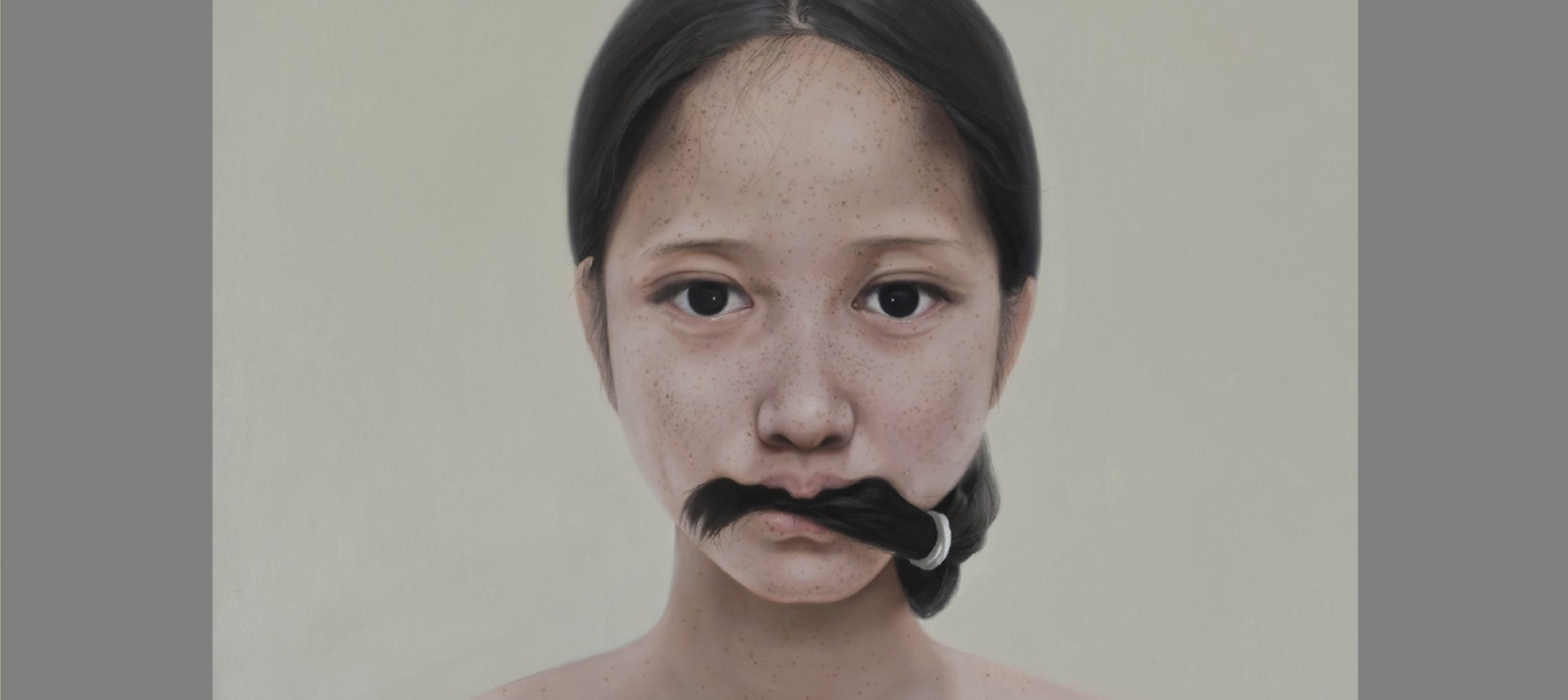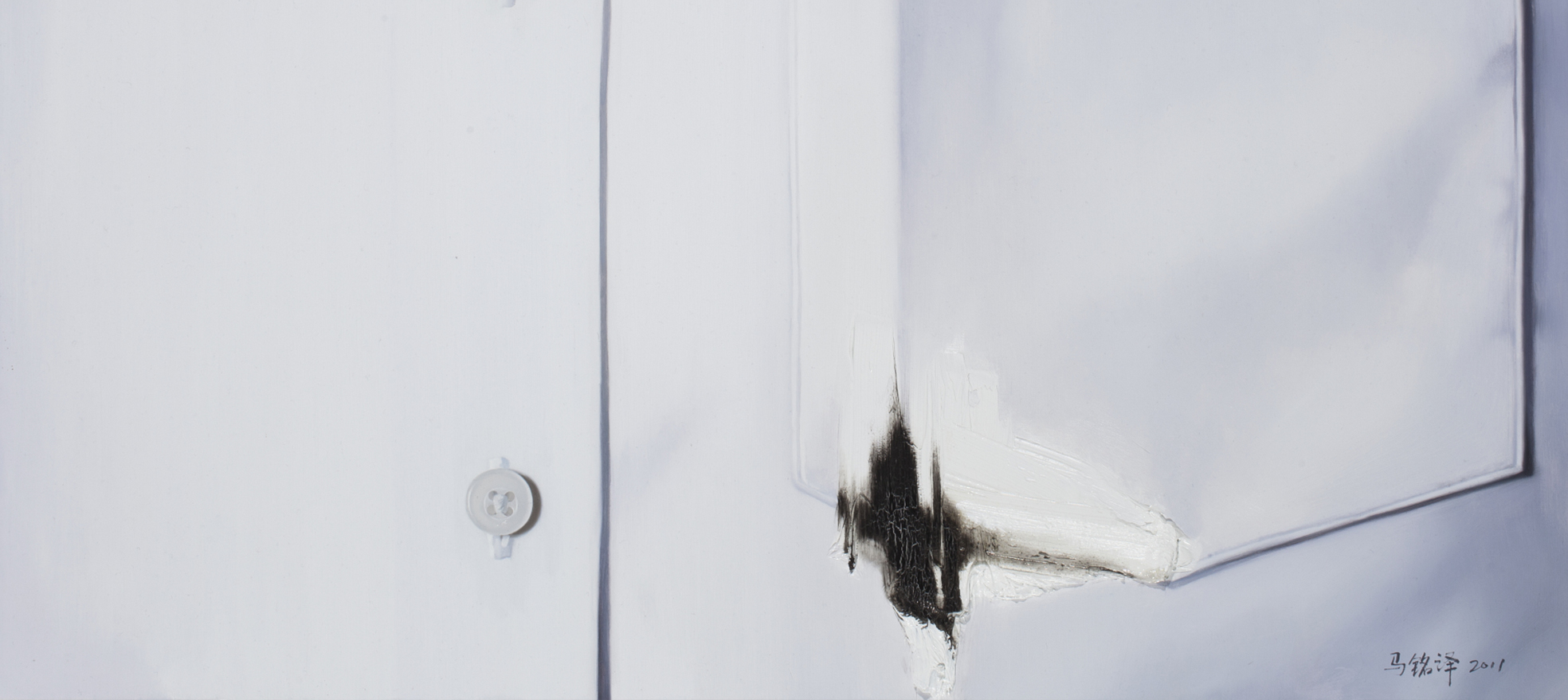Freeze a Moment
1. Gazing Sideways at Observation
Agirl stares at the wall of the schoolyard for a long time. After muchdeliberation and observation, she remains baffled. Such words as “everyday” and"responsibility” lingerin her mind.
2. Focusing on Gaze
She bites down hard on the pretty braid as shestands before the mirror once again.
She opens her eyes as wide as she can beforefinally relaxing again.
3. Anxiety over Events
The shirt was white as snow just a moment ago,but now a dark cloud of ink spreads across it. His breast is soaked with sweat.The vision is filled with water.
Itis often said that life for modern people is anything but simple. At some pointin time, the once ordinary, customary things of old were no longer ordinary, nolonger calm. Day in and day out, things unfold around us in a constant,unconscious stream. The media surges forth with a stream of information.Everything is at our fingertips, from the smallest to greatest of things, fromthe most trivial to the most fascinating. It flows across the skies, from onehorizon to the next. The media has risen like a cyclone, sweeping up theaffairs of the people and exposing them for all to see, with little if anyfilter. This wildfire spread of the media inevitably deals a strong blow to themodes of thinking and emotional worlds of modern people, and makes the mostordinary, common things strange and confusing. We do know deep down that thesethings are connected in countless ways, but this shifting landscape has cast upgreat waves of information that have subsumed the truth. When facing anincreasingly complex life, we are at a loss, filled with anxiety andhelplessness.
Inher paintings, Ma Mingze analyzes the social phenomena described above and thestructural issues behind them, presenting them to us in a fragmented manner. Inmodern society, people are so busy with their families and careers that theyhave no time or energy for these quotidian details, catching them only as afleeting glimpse. But Ma Mingze, with her refined emotions and keen insight,captures one trivial scene after another and fixes these ordinary butindispensable moments from life. I think this is the way it should be. This iswhy her works are brimming with rich silhouettes of everyday life. I feel thereis no need for detailed research into whether the painter is aware of thevarious issues described above. That is because we can see from her work that,on a subconscious level, these issues are already clear as day for her. Beforeengaging in a detailed analysis of her works, we should start by grasping thewhole, and taking in the unease that enshrouds her painting. The apprehensionshows in her every expression. Though the things and scenes in her paintingsare exceedingly common, when we look at her works, complex feelings of uneasebegin to inexplicably surface. The range of human emotions, may be predictable,but they are also highly subjective, difficult to describe, and abstract to theextreme. All of this is revealed in vivid detail in Ma Mingze's works. Most ofher paintings use simple colors, predominantly monochrome, and depict allmanner of scenes within limited space. She will often also depict the centralarea in a high level of detail, highlighting it while softening the surroundingarea, creating a powerful sense of urgency and confinement. This is a classictechnique from Leica photography, and also calls to mind the work of Frenchphotography master Henri Cartier-Bresson. He had a profound influence on modernphotojournalism. His photographs capture magical moments over a foundation ofprecise spatial control, capturing the everyday lives of the masses as theystruggle through history. He used a fresh and natural photographic approach todeftly capture the sense of unreality in the everyday lives of the commonpeople, as seen in his classic book, TheDecisive Moment.
Thismaster's works command great heights. Ma Mingze’spaintings draw from these heights. The things and scenes the artist sees—aschoolyard wall, scattered hairs on a pillow, a loose imprint left after risingfrom bed, a bare foot stepping on the pavement, bright glimmer of lightreflecting off a door plaque and doorknob, curtains billowing in a window,clothing bulging from a closet, rays of light sweeping across a window,blotches of ink staining a shirt, all of these embody Ma Mingze’s“unique wisdom ofvision” that captures so manymoments of volition and cognition, and attempts to reflect the anxiety ofmodern people from multiple perspectives. This exhibition begins with the painter'sconsciousness and ends with the decisive moments of everyday life. Theexhibition follows the order of Observation,Gaze and Event.
Mi-RyoungKim
Freeze a Moment
1. Gazing Sideways at Observation
Agirl stares at the wall of the schoolyard for a long time. After muchdeliberation and observation, she remains baffled. Such words as “everyday” and"responsibility” lingerin her mind.
2. Focusing on Gaze
She bites down hard on the pretty braid as shestands before the mirror once again.
She opens her eyes as wide as she can beforefinally relaxing again.
3. Anxiety over Events
The shirt was white as snow just a moment ago,but now a dark cloud of ink spreads across it. His breast is soaked with sweat.The vision is filled with water.
Itis often said that life for modern people is anything but simple. At some pointin time, the once ordinary, customary things of old were no longer ordinary, nolonger calm. Day in and day out, things unfold around us in a constant,unconscious stream. The media surges forth with a stream of information.Everything is at our fingertips, from the smallest to greatest of things, fromthe most trivial to the most fascinating. It flows across the skies, from onehorizon to the next. The media has risen like a cyclone, sweeping up theaffairs of the people and exposing them for all to see, with little if anyfilter. This wildfire spread of the media inevitably deals a strong blow to themodes of thinking and emotional worlds of modern people, and makes the mostordinary, common things strange and confusing. We do know deep down that thesethings are connected in countless ways, but this shifting landscape has cast upgreat waves of information that have subsumed the truth. When facing anincreasingly complex life, we are at a loss, filled with anxiety andhelplessness.
Inher paintings, Ma Mingze analyzes the social phenomena described above and thestructural issues behind them, presenting them to us in a fragmented manner. Inmodern society, people are so busy with their families and careers that theyhave no time or energy for these quotidian details, catching them only as afleeting glimpse. But Ma Mingze, with her refined emotions and keen insight,captures one trivial scene after another and fixes these ordinary butindispensable moments from life. I think this is the way it should be. This iswhy her works are brimming with rich silhouettes of everyday life. I feel thereis no need for detailed research into whether the painter is aware of thevarious issues described above. That is because we can see from her work that,on a subconscious level, these issues are already clear as day for her. Beforeengaging in a detailed analysis of her works, we should start by grasping thewhole, and taking in the unease that enshrouds her painting. The apprehensionshows in her every expression. Though the things and scenes in her paintingsare exceedingly common, when we look at her works, complex feelings of uneasebegin to inexplicably surface. The range of human emotions, may be predictable,but they are also highly subjective, difficult to describe, and abstract to theextreme. All of this is revealed in vivid detail in Ma Mingze's works. Most ofher paintings use simple colors, predominantly monochrome, and depict allmanner of scenes within limited space. She will often also depict the centralarea in a high level of detail, highlighting it while softening the surroundingarea, creating a powerful sense of urgency and confinement. This is a classictechnique from Leica photography, and also calls to mind the work of Frenchphotography master Henri Cartier-Bresson. He had a profound influence on modernphotojournalism. His photographs capture magical moments over a foundation ofprecise spatial control, capturing the everyday lives of the masses as theystruggle through history. He used a fresh and natural photographic approach todeftly capture the sense of unreality in the everyday lives of the commonpeople, as seen in his classic book, TheDecisive Moment.
Thismaster's works command great heights. Ma Mingze’spaintings draw from these heights. The things and scenes the artist sees—aschoolyard wall, scattered hairs on a pillow, a loose imprint left after risingfrom bed, a bare foot stepping on the pavement, bright glimmer of lightreflecting off a door plaque and doorknob, curtains billowing in a window,clothing bulging from a closet, rays of light sweeping across a window,blotches of ink staining a shirt, all of these embody Ma Mingze’s“unique wisdom ofvision” that captures so manymoments of volition and cognition, and attempts to reflect the anxiety ofmodern people from multiple perspectives. This exhibition begins with the painter'sconsciousness and ends with the decisive moments of everyday life. Theexhibition follows the order of Observation,Gaze and Event.
Mi-RyoungKim



